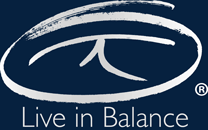



Besides leaving you feeling relaxed and rejuvenated, massage reduces stress–a key player in most of our modern diseases.
Through safe, compassionate touch, you can loosen your bonds with the man-made world and reconnect with your core self, reconnect with the way you want to live.
I'm an expert at several types of massage and choose different approaches depending on what you need.
—David Lauterstein's Deep Massage uses breath and clearly focused touch to gently encourage the nervous system (which drives muscle tension) to relax and invite deeper contact into the muscles. The result is touch that feels and responds to your muscular tension.
—Myofascial Release, as taught by Robert King, uses visual and palpating assessment to guide the body into better skeletal alignment through massage. The fascia, connective tissue layered throughout muscle tissue, is very adaptive and responsive to manual therapy. Stretches and strengthening exercises may also be incorporated into your self-care toolbox.
—Swedish Massage, the foundation of Western bodywork, and my first love, is guided by the exquisite form of the body. It provides a sense of length and space within and is ultimately soothing and deeply relaxing.
—Orthopedic Massage, treatment of soft tissue pain and injury. This body of work addresses musculoskeletal challenges and helps solve problems. It often involves active movement on your part, while I work within affected tissues.
Tich Naht Hahn says, "The body is not only the vessel, but also the sage."
Copyright © 2024 - All Rights Reserved - Cameron Babberney
Template by OS Templates